A lake is an area of variable size filled with water, localized in a basin, that is surrounded by land, apart from any river or other outlet that serves to feed or drain the lake. Below are the famous lakes :-
1. Pangong Tso Lake
Pangong Tso is an endorheic lake in the Himalayas. It is 134 km long and extends from India to Tibet. Approximately 60% of the length of the lake lies in Tibet. The lake is 5 km wide at its broadest point. During winter the lake freezes completely, despite being saline water. It is not part of Indus river basin area and geographically a separate land locked river basin. The brackish water of the lake has very low micro-vegetation. Guides report that there are no fish or other aquatic life in the lake, except for some small crustaceans.
The lake acts as an important breeding ground for a variety of birds including a number of migratory birds. During summer, the Bar-headed goose and Brahmini ducks are commonly seen here. Pangong Tso can be reached in a five-hour drive from Leh, most of it on a rough and dramatic mountain road. For security reasons, India does not permit boating. Here climax scene of 3 Idiots film and many film songs were shot.
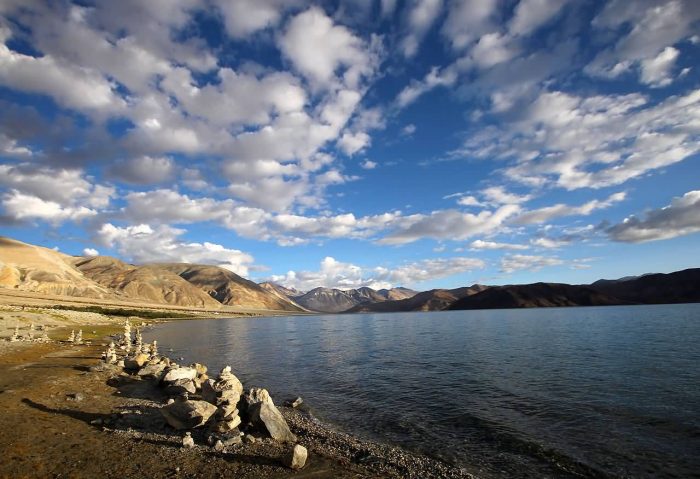
Sarah Zezulka /CC BY-SA 3.0 | Pangong Tso Lake
2. Sambhar Salt Lake
The Sambhar Salt Lake, India’s largest inland salt lake. A bowl shape lake encircles historical Sambhar Lake Town located 96 km south west of the city of Jaipur and 64 km north east of Ajmer along National Highway 8 in Rajasthan. The Indian epic Mahabharata mentions the Sambhar lake as part of the kingdom of the demon king Brishparva, as the place where his priest Sukracharya lived and as the place where the marriage between his daughter, Devayani and King Yayati took place. It occupies an area of 190 to 230 square km, based on the season.
It is located in Nagaur and Jaipur districts and it also borders the Ajmer district. The Sambhar lake basin is divided by a 5.1 km long dam made of sand stone. The lake produces 196,000 tonnes of clean salt every year, which equates to around 9% of India’s salt production. Salt is produced by evaporation process of brine and is mostly managed by Shambar Salts Ltd.(SSL), a joint venture of the Hindustan Salts Ltd. and the state government.
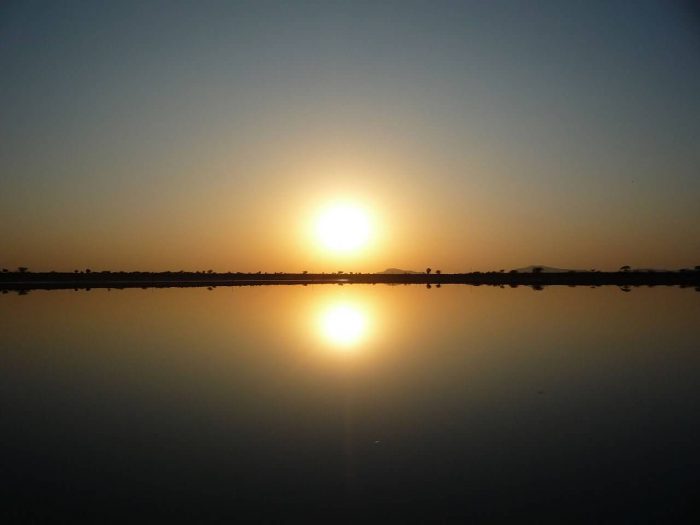
Nawanshu91 /CC BY-SA 3.0 | Sambhar Lake Sunset Scene
3. Pichola Lake
Pichola Lake situated in Udaipur city in Rajasthan. It is an artificial fresh water lake and created in the year 1362 AD. The named of lake after the nearby Picholi village. The lakes around Udaipur were primarily created by building dams to meet the drinking water and irrigation needs of the city and its neighborhood. Two islands, Jag Niwas and Jag Mandir are located within Pichola Lake and have been developed with several palaces to provide views of the lake.
The lake’s surroundings and the several islands within the lake have been developed over the centuries with palaces, marble temples, family mansions, bathing ghats or chabutaras. Some of the famous ones are the Lake Palace (now converted into a heritage hotel) in the middle of the lake also called the Pichola Palace. At several locations where the lake narrows, ornamental arch bridges have been built to span the waterway between the banks.
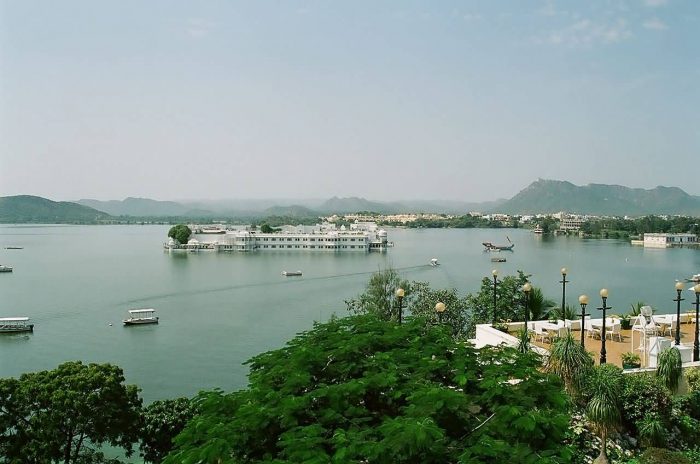
Uri Sittan Tripo /CC BY-SA 3.0 | Pichola Lake In Udaipur
4. Suraj Tal Lake
Suraj Tal Lake also called Surya taal. The lake is a sacred body of water, literally means the Lake of the Sun God and lies just below the Bara-lacha-la pass in the Lahaul and Spiti valley of Himachal Pradesh state in India. It is the third highest lake in India and the 21st-highest in the world. Suraj Tal Lake is the source of Bhaga River.
Lahaul Spiti valley is common a destination for Indian and foreign tourists for road trips, trekking and motorcycling which cover the Lake and the Bara-lacha-la pass, en route from Manali to Leh. Trekking tours are a common feature in Lahaul and Spiti valley. One such trek route is the Zingzingbar–Suraj Tal–Bara-lacha-la, which involves trek along the Bhaga River for 3 km, cross a bridge to the North bank, then a further climb of 2.5 km from the bridge followed by a steep foot trail up to Suraj Tal.
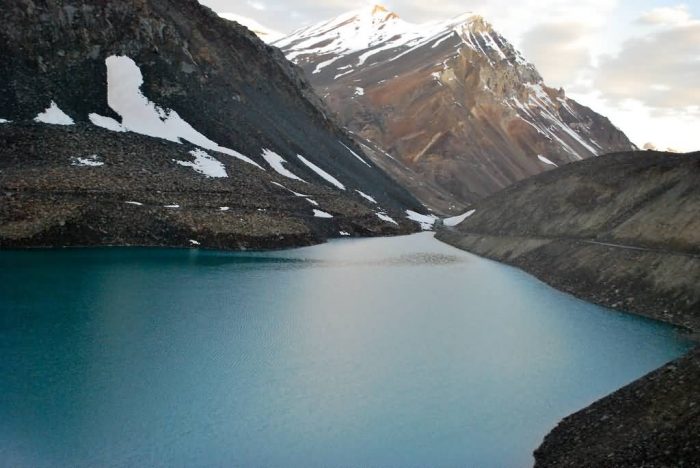
Ajay Panachickal /CC BY-SA 2.0 | Suraj Tal Lake
5. Umiam Lake
Umiam Lake is a reservoir located in the hills 15 km to the North of Shillong in the state of Meghalaya, India. It was created by damming the Umiam river in the early 1960s. The principal catchment area of the lake and dam is spread over 220 square km. The dam started construction in 1965. The dam has the distinction of being the first Hydel power project in the North-east region of India.
Apart from storing water for electricity generation, the lake also provides a large number of ecosystem services at micro, meso and macro levels. Downstream irrigation, fisheries and drinking water cater to local anthropogenic needs. The lake serves as a major tourist attraction for the state of Meghalaya. It is also a popular destination for water sport and adventure facilities. Tourists visit this spot for kayaking, water cycling, scooting and boating.
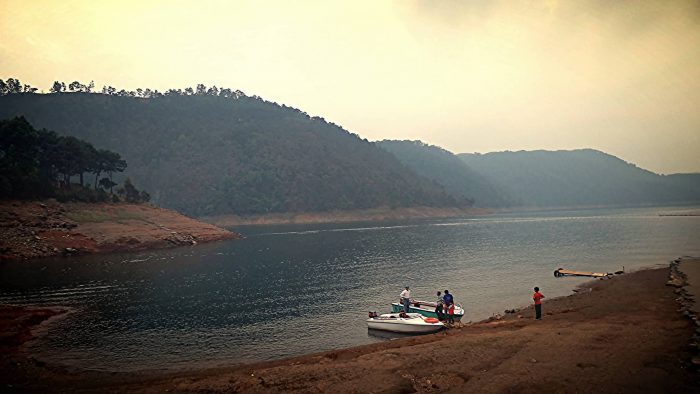
Nori Syamsunder Rao /CC BY 2.0 | Umiam Lake
6. Tsongmo Lake
Tsongmo Lake or Changu Lake is a glacial lake in the East Sikkim, India. The lake is 40 kilometres away from Gangtok. During the winter season the lake remains frozen. The lake surface reflects different colours with change of seasons. The lake is held in great reverence by the local Sikkimese people. Buddhist monks prognosticated the future of the country after studying the changing colours of the lake.
In Bhutia language the name Tsongmo is made of two words ‘Tso’ meaning “lake” and ‘Mgo’ meaning “head” which gives the literal meaning as “source of the lake”. The lake is surrounded by steep mountains which are covered with snow during winter. During summer the snow cover melts and forms the source for the lake. Tourist attractions at the lake site are of joy rides on decorated yaks and mules where eating kiosks offer variety of food and drinks. There is also a small Shiva temple on the bank of the lake.
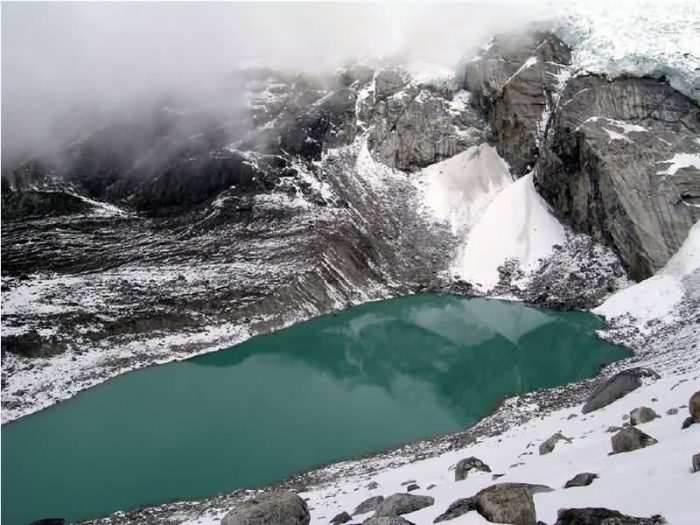
Ravinder Singh Gill /CC BY-SA 2.0 | Tsongmo Lake
7. Pulicat Lake
Pulicat Lake is the second largest brackish water lake or lagoon in India after Chilika Lake. It straddles the border of Andhra Pradesh and Tamil Nadu states on the Coromandal Coast in South India. The lake encompasses the Pulicat Lake Bird Sanctuary. The barrier island of Sriharikota separates the lake from the Bay of Bengal. The lagoon has rich flora and fauna diversity, which supports active commercial fisheries and a large and varied bird population.
Fishing is the major occupation in the many villages located around the lake. The Tamil Nadu part of the lagoon of 60 sq km area was declared a Bird Sanctuary in October 1980. Every year approximately 15,000 greater flamingos are reported to visit the lake along with pelicans, kingfishers, herons, painted storks, spoonbills and ducks.
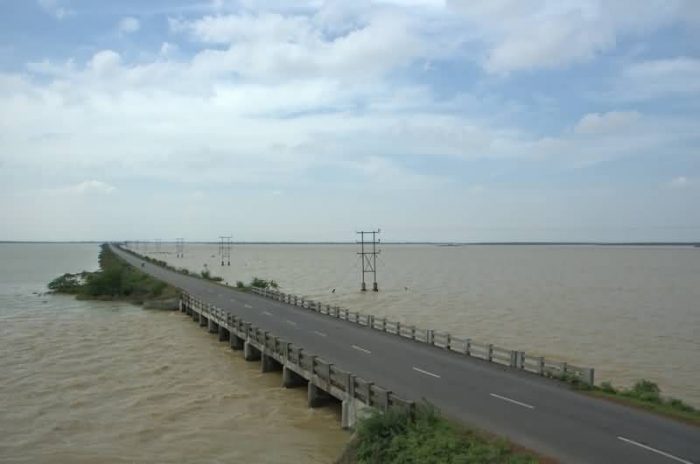
Manvendra Bhangui /CC BY 2.0 | Pulicat Lake
8. Pushkar Lake
Pushkar Lake is located in the town of Pushkar in Ajmer district of the Rajasthan. Pushkar Lake is a sacred lake of the Hindus. Pushkar Lake is surrounded by 52 bathing ghats, where pilgrims throng in large numbers to take a sacred bath, especially around Kartik Poornima when the Pushkar Fair is held. A dip in the sacred lake is believed to cleanse sins and cure skin diseases. Over 500 Hindu temples are situated around the lake precincts.
As part of conservation measures, the government is undertaking de-silting, de-weeding, water treatment and afforestation as well as mass awareness programme. The Rajput rulers of Amber, Bundi, Bikaner and Jaisalmer made great efforts to restore the importance of the lake and its surrounding temples. Pushkar Lake, when full, is rich in fish and other aquatic life.
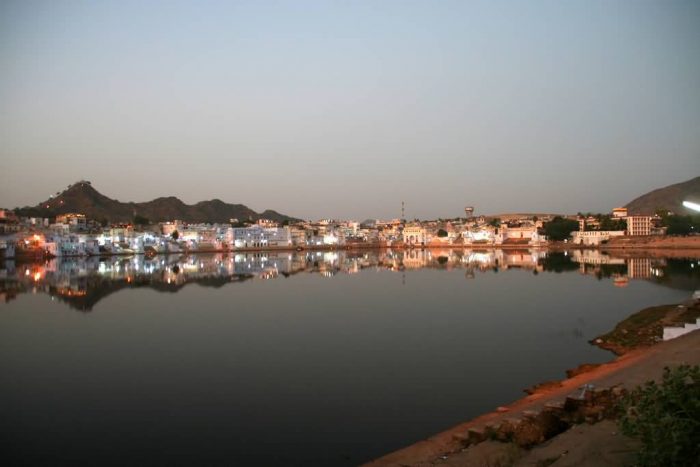
Felipe Skroski /CC BY 2.0 | Pushkar Lake At Evening
9. Manasbal Lake
Manasbal Lake is located in Safapora area of Ganderbal District in the State of Jammu and Kashmir in India. The name Manasbal is said to be a derivative of the Lake Manasarovar. Lake is encircled by three villages: Jarokbal, Kondabal and Ganderbal and is stated to be the deepest lake in India. The large growth of lotus at the periphery of the lake adds to the beauty of the clear waters of the lake.
The lake is a good place for bird watching as it is one of the largest natural stamping grounds of Aquatic birds in Kashmir. The weather is pleasant in the months of May and August, when the lake offers water skiing sport, which is now becoming an increasingly popular activity in many rivers and lakes in India.
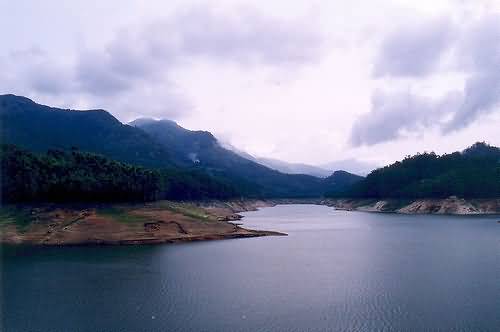
Deepak /CC BY-SA 3.0 | Manasbal Lake
10. Hussain Sagar Lake
Hussain Sagar is a lake in Hyderabad, Telangana, India. It built by Hazrat Hussain Shah Wali in 1562. It is spread across an area of 5.7 sq km and is fed by River Musi. Maximum depth of the lake is 32 feet. A large monolithic statue of the Gautama Buddha stands in an island in the middle of the lake. There are many attractions around the lake like Lumbini Park is an urban park adjacent to Hussain Sagar. Birla Mandir is a Hindu temple built of white marble on a 280 feet high hillock located to the south of Hussain Sagar.
Sanjeevaiah Park is a public green space and park located to the north of the lake. NTR Gardens is a small urban park adjacent to Hussain Sagar lake. Hussain Sagar lake is a popular spot for sailing. Secretariat buildings, Hyderabad Boat Club on the southern side, Secunderabad Sailing Club, Hotel Marriott on the northern side and Raj Bhavan on the western banks. Eat street is a famous street for outdoor eateries and shops located on the west side of the lake.
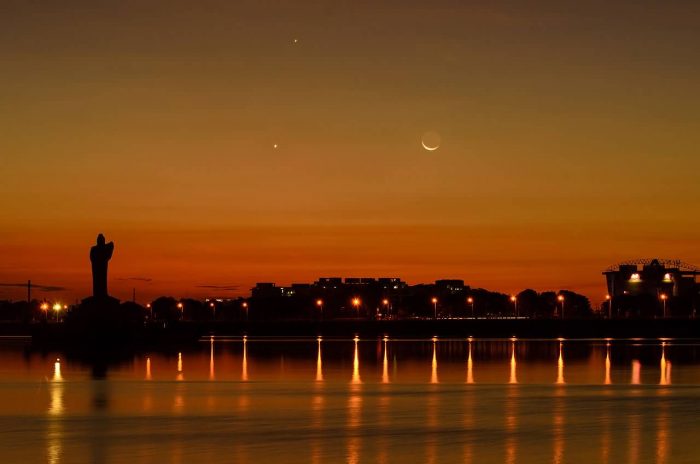
Shrichandray /CC BY-SA 4.0 | Hussain Sagar Moon Rise
11. Upper Lake (Bhojtal)
Upper Lake is a large lake which lies on the Western side of the capital city of Madhya Pradesh, Bhopal. It is a major source of drinking water for the residents of the city, serving around 40% of the residents with nearly 30 million imperial gallons of water per day. Bhojtal attracts tourists due to its scenic beauty. India’s first National Sailing Club has been established at the Boat Club on its Eastern side. This club offers various water sports such as kayaking, canoeing, rafting, water skiing, parasailing etc.
A number of operators provide facilities for exciting trips by sail, paddle and motor boats. Van Vihar National Park, situated on the south-eastern side of the lake attracts tourists. The road passing through it has on one side the animals in their natural habitats and on the other hand is the scenic beauty of the lake. The other major attraction close to the lake is the Bhopal Zoo on the bank of the lake. This makes the lake a complete entertainment location for all visitors. The zoo is kept in quite natural way.
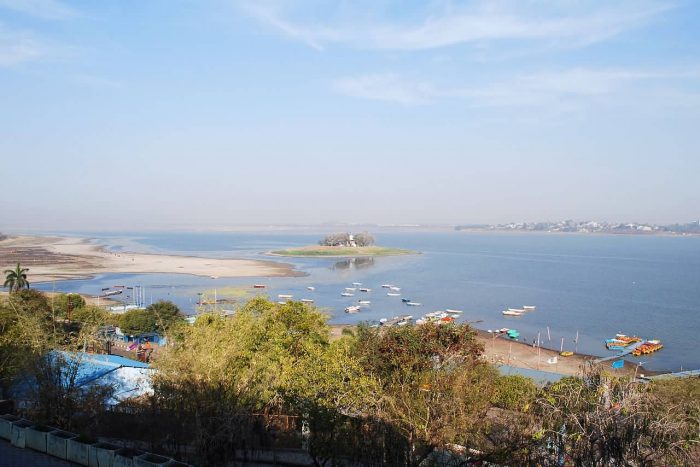
Sanyam Bahga /CC BY-SA 3.0 | Upper Lake
12. Nainital Lake
Nainital Lake is a natural freshwater body. It is located the township of Nainital in Uttarakhand, India. Nainital district where the lake is situated is rich in flora and fauna. Generally, carps Mahseer fishes are found in the lake. The imported fish bred in the lake is Mirror carp or Cyprinus carpio. Gambusia affinis also called Mosquitofish have been introduced in the lake as a biocontrol measure to control Mosquito larvae. Nine species of birds and nine species of animals have been recorded in the Nainital district.
There is the Nainital Boat Club that offers yachting facilities at the lake. The Annual Kingfisher Yachting Competition is held here in the third week of June. The Kumaon festival which brings out the local cultures and traditions is organized every year during the winter months of October and November, by the Tourism Department.
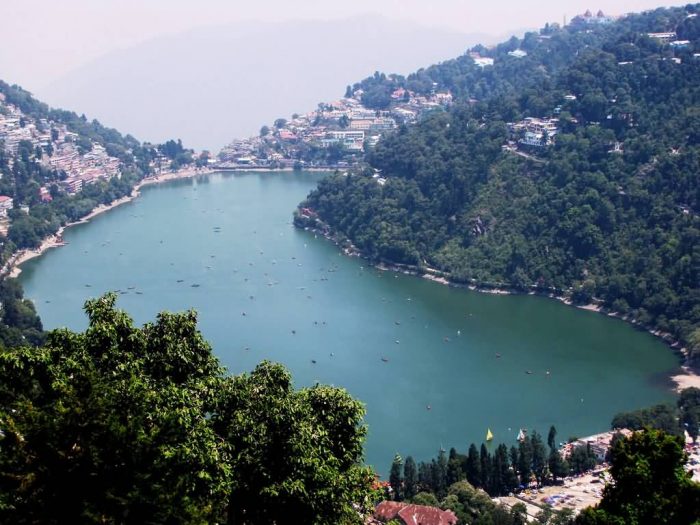
Sujayadhar /CC BY-SA 4.0 | Nainital Lake
13. Nakki Lake
Nakki Lake is a lake situated in the Indian hill station of Mount Abu in Aravalli range. According to the Hindu legend, it is a very ancient sacred Lake. It is called by this name because it was dug out from Nails (Nakh). One story is of dug by Gods to live in, for protection against the Bashkali rakshash. The lake is in length of about a half mile and in width about of a quarter of mile and 20 to 30 ft.
It is an important tourist attraction of Mount Abu. There is the Toad Rock on a hill near the lake. Toad rock is so called as it looks like a toad about to jump into the lake from the side of the rock facing the lake. By the side of the lake there is a path leading to Sunset Point. Raghunath Temple and Maharaja Jaipur Palace are also on hills near the Lake. Boating in the lake and horse rides around the lake are available.
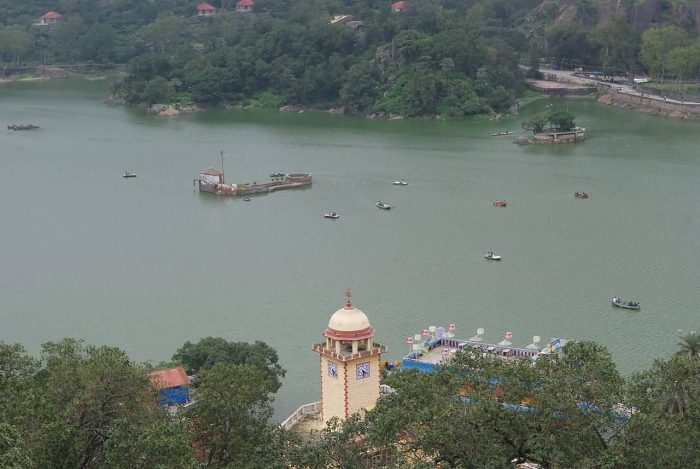
Jmacleantaylor /CC BY-SA 3.0 | Nakki Lake
14. Gurudongmar Lake
Gurudongmar Lake is one of the highest lakes in the world. It lies in the district of North Sikkim in Sikkim, only some 5 km south of Chinese border. The lake can be reached by road from Lachen via Thangu. The lake is blessed by the Buddhist saint Guru Rinpoche and is regarded sacred by the Sikkimese.
Gurudongmar lake provides one of the source streams of the Teesta River. The source of Teesta, the Tso Lhamo Lake, lies some 5 km to the east. One can seek permission from the army to trek from Gurudongmar Lake to Tso Lhsmo Lake. The lake remains completely frozen in the winter months from November to Mid-May.
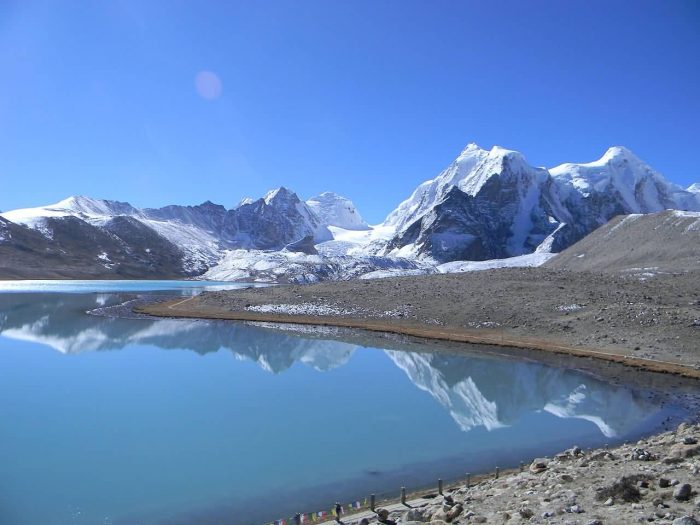
Dcqec111 /CC BY-SA 3.0 | Gurudongmar Lake
15. Dal Lake
Dal Lake is a lake in Srinagar, indian state of Jammu and Kashmir. The lake is named the “Jewel in the crown of Kashmir” or “Srinagar’s Jewel”. It is a tourist attraction and an important source for commercial operations in fishing and water plant harvesting. Swimming, boating, snow skiing (particularly when the lake is frozen during the severe winter) and canoeing are amongst some of the water sports activities practised on the lake. The lake has numerous sites and places of interest, many of which are important to the cultural heritage of Srinagar.
Aside from the Shalimar Bagh and Nishat Bagh, some of the other places frequented by tourists are the Shankaracharya temple, the Hari Parbat, the Nagin Lake, the Chashme Shahi, the Hazratbal Shrine and the Mazar-e-Shura cemetery containing the graves of famous Mughal-era poets. Visitors and native alike also enjoy relaxing on the water in a houseboat or a shikara boat, often called “the Gondola of Kashmir”. A famous landmark in Srinagar is an island on Dal Lake where four Chinar trees stand, named “Char Chinar”.
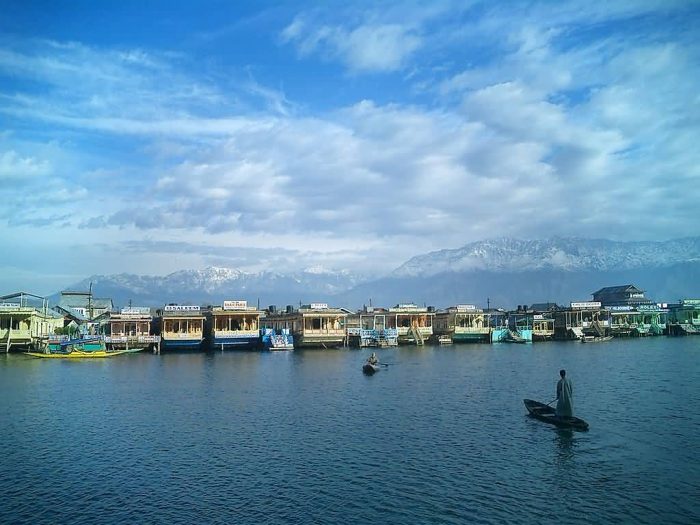
Prakhar Amba /CC BY 2.0 | Houseboats In Dal Lake

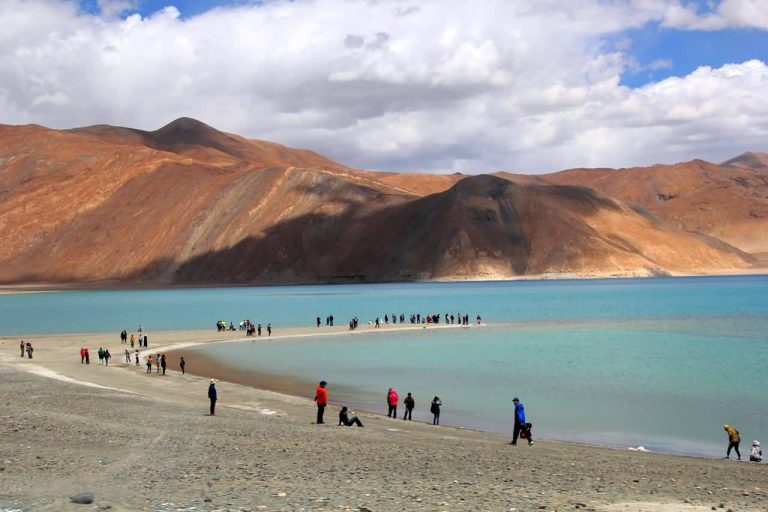

Connect with us